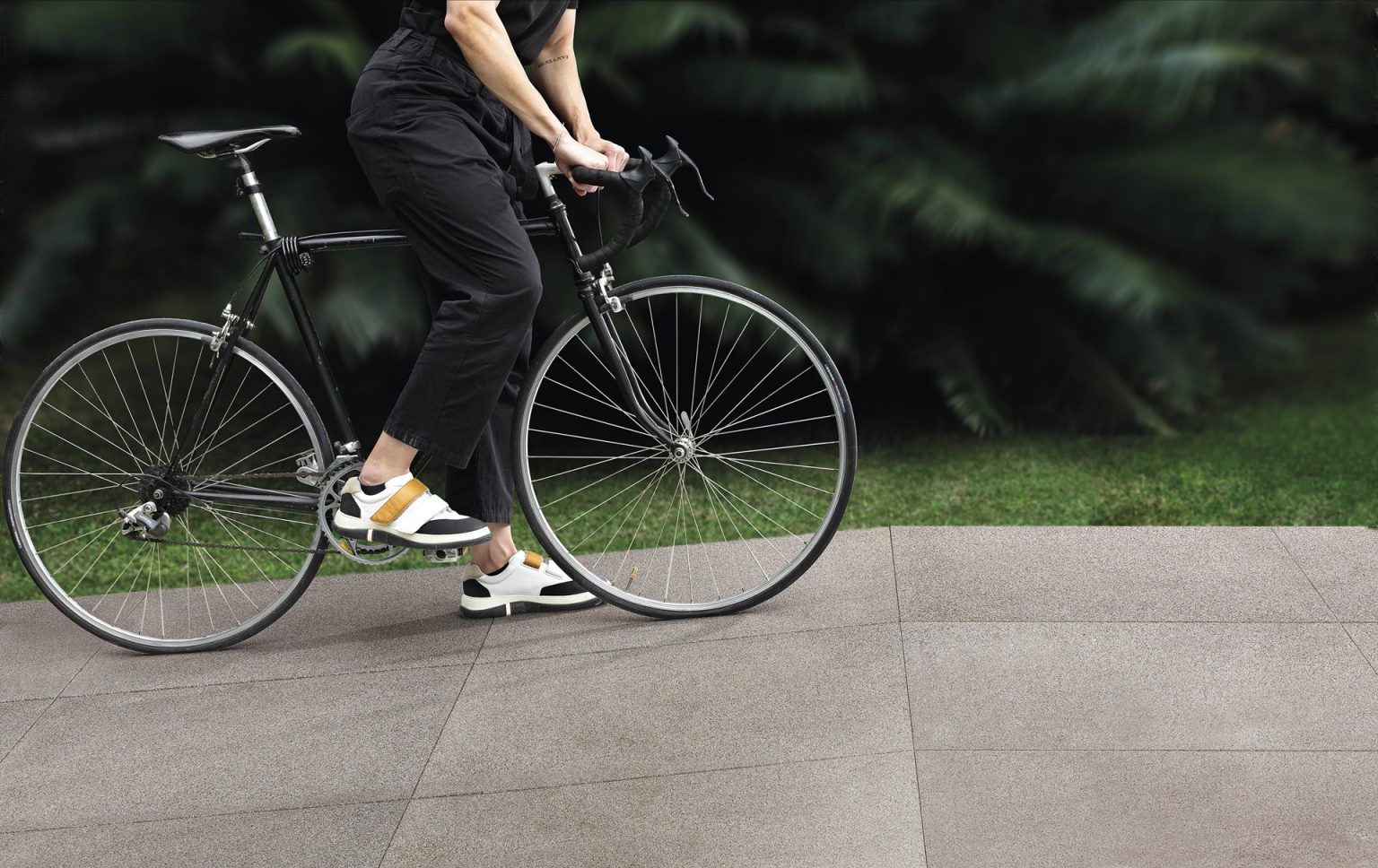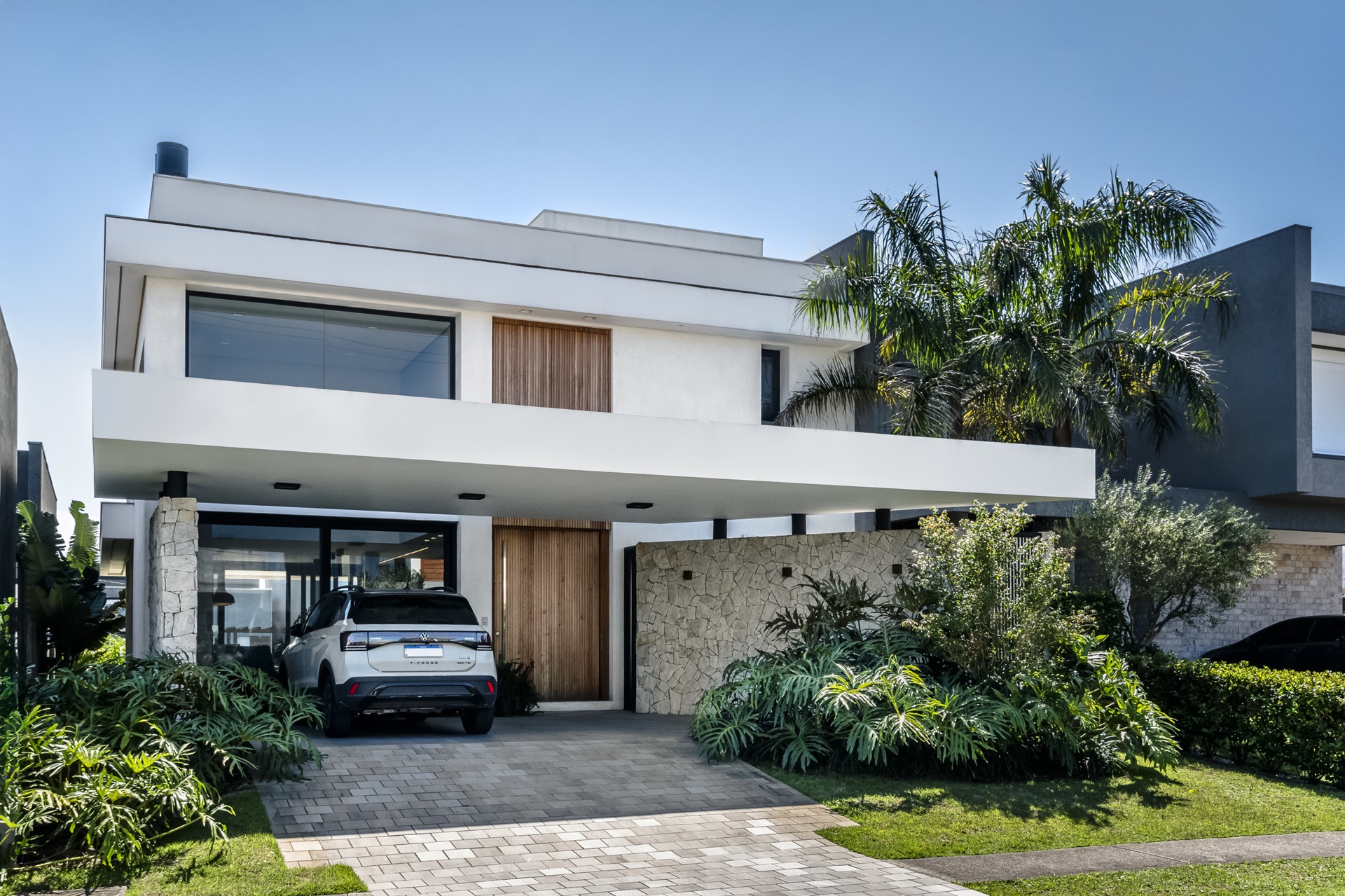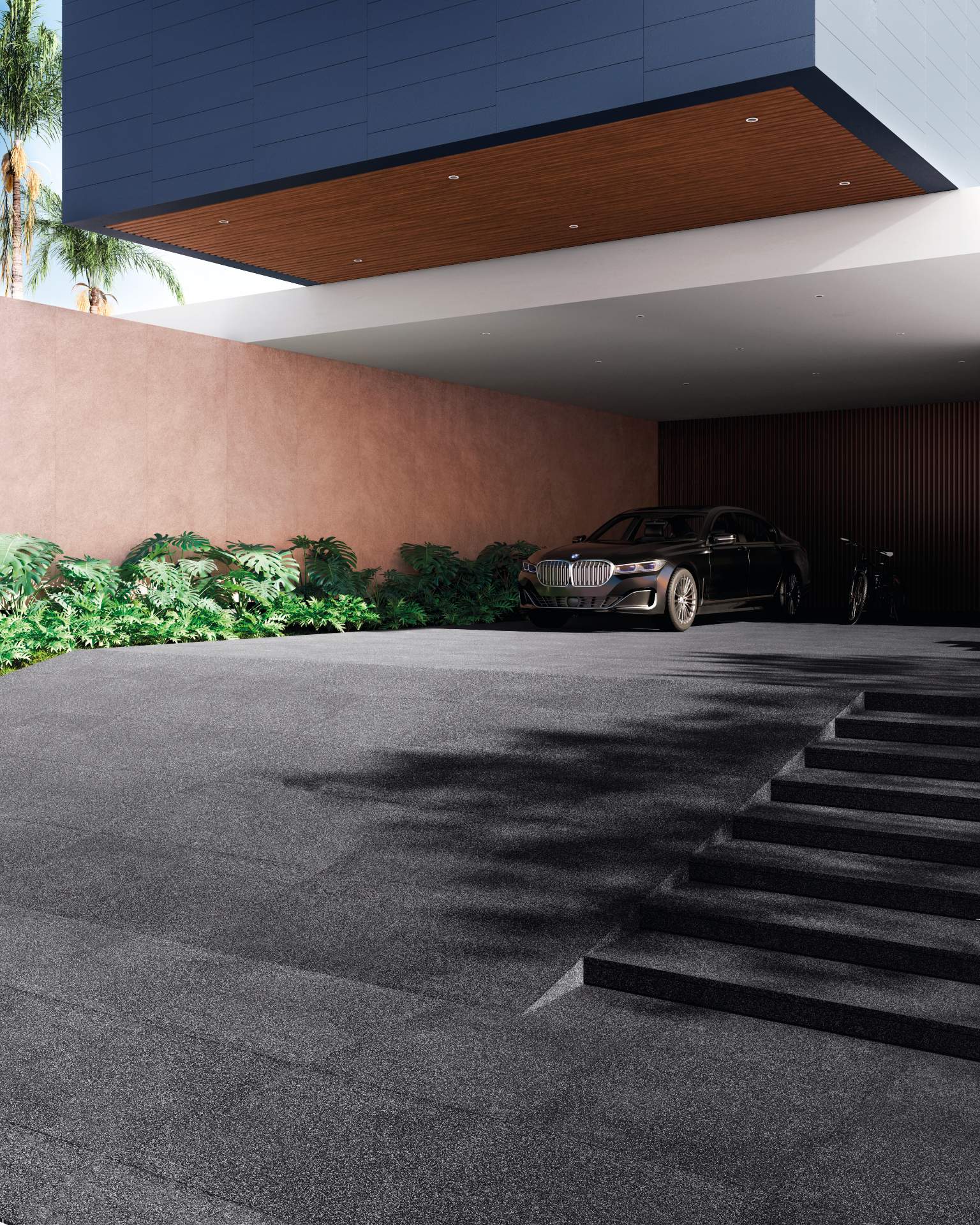Flooring: what to know to make the right choice
Learn how to choose the best sidewalk coating, with tips on materials, safety, aesthetics and standards for outdoor areas

Choosing the ideal sidewalk covering goes far beyond aesthetics. After all, outdoor flooring needs to involve safety, durability, thermal comfort, water drainage and harmony with the architecture of the property.
To make the right choice, it is important to understand not only the types of flooring available on the market, but also the correct terms used in architecture for outdoor areas and how these spaces integrate into the overall design of the home.
In the following lines, you'll understand what to consider when choosing a sidewalk coating and discover the differences between sidewalks, driveways and other outdoor spaces.

What is the difference between a sidewalk and a curb?
Before talking about flooring, it is essential to understand the correct nomenclature:
- Sidewalk: this is the part of the public road intended for pedestrian circulation, usually at a different level to the roadway. It lies between the curb and the edge of the building plot. Therefore, it belongs to the urban space and, even though it is the responsibility of the resident, it follows the rules of the town hall, such as accessibility, slope and type of coating.
- Sidewalk: this is the technical term used to refer to the part of the sidewalk that is actually intended for the movement of people, animals and bicycles. It therefore needs to be free of interference. For example, on sidewalks with posts or trees, the sidewalk is between the beginning of the building and these elements.
How do you choose a sidewalk coating?
The sidewalk covering needs to meet various functional and regulatory criteria. Here are the main points to consider:
1. Slip resistance properties
Sidewalk surfaces must be safe, especially on rainy days. For this reason, the surface needs to have properties that prevent slipping, even when wet.
In general, coatings with an external finish are the most suitable.
2. Traffic resistance

If the sidewalk is also used for vehicle entry (such as in garages), the flooring must withstand weight and constant wear. Check the coating manufacturer's technical information, such as the PEI, to make sure it is suitable.
3. Drainage
It is essential to allow rainwater to drain away to avoid puddles and flooding. This is why drainage floors are becoming increasingly popular.
4. Durability and low maintenance
Avoid coatings that chip, fade over time or require constant maintenance.
5. Compliance with municipal regulations

Each city has its own building code or sidewalk manual. The same goes for condominiums.
Before deciding on the cladding, check the local regulations. There are often specifications on minimum width, accessibility (such as tactile floors and ramps) and even permitted colors.
Tip: don't confuse expansion joints
Inside the house, such as in cold areas (bathrooms, kitchen and laundry room), it is common to apply expansion joints or take care to prevent infiltration.
However, in the case of paving, this is not necessary. After all, the floor is directly on the ground and doesn't have to deal with structural movements in the same way as an internal slab.
Types of sidewalk coating
We've also put together a list of the main types of flooring for sidewalks, along with their characteristics. Take a look!
Fulget flooring

Widely used in outdoor areas, fulget flooring is made from natural pebbles and resin. It is hard-wearing, slip-resistant and does not heat up in the sun. It can be molded on site or sold in slabs, as is the case with Portobello models.
Interlocking flooring
They are concrete blocks in various shapes that fit together. As well as being beautiful, they are draining, sustainable and easy to repair.
Drainage floor
Made with porous materials such as permeable concrete, it allows rainwater to be absorbed into the ground, reducing the risk of flooding and helping the environment.
Portuguese stone
Classic and elegant, it is made up of small marble or limestone stones. It is a sidewalk covering most commonly used on public roads. However, it requires specialized labor and regular maintenance.
Porcelain tiles
It is hard-wearing, available in different formats and finishes. The variety of designs and faithful reproduction of natural materials such as stone and wood is also an advantage.
This way, you can choose the model that best suits the style of the project, and it's more sustainable because it has a production process that is less harmful to the environment than extracting natural materials.
In this case, choose models that are suitable for high-traffic areas and have properties that prevent slipping, such as floors with an external finish.
Natural stones (such as São Tomé or miracema)
They are resistant, beautiful and ideal for outdoor areas. São Tomé stone, for example, is light and doesn't heat up easily, suitable for hot regions.
And what flooring to use around the house?
In addition to flooring for sidewalks, there are other outdoor spaces that also require attention to the type of flooring. See below for the differences and suggestions:
Garden flooring

Garden flooring is the covering that makes up the green area. It needs to be resistant to moisture and blend in with the landscaping. It can include:
- Pebbles or natural stones;
- Drainage floors;
- Wooden decks or porcelain tiles with a woody appearance;
- Interlocking floors;
- Rubberized floors for areas with children.
Garden tour

This is the circulation path within the garden, usually in an organic or curvilinear layout. It can be made from the same materials as the garden floor, but the focus is on functionality and walking comfort.
Around the house

There are different spaces around the property that also need attention. For example, the external service area, side corridors, garage entrance and yard. These areas can receive:
- Concrete floors;
- Ceramic or porcelain tiles with an external finish or TACT;
- Fulget flooring;
- Natural stones;
- Other floors with good adhesion and low water absorption.
How to harmonize the external floor with the design of the house?
In addition to the technical criteria, sidewalk cladding can enhance the façade and complement the architectural style of the property. Some tips include:
- For contemporary homes: floors with straight lines, neutral colors and materials such as fulget or cementitious coatings.
- For rustic homes: natural stones, woody porcelain decks and clay bricks.
- For classic homes: Portuguese stone or porcelain tiles with geometric designs and well-defined edges.
Content: Archtrends





